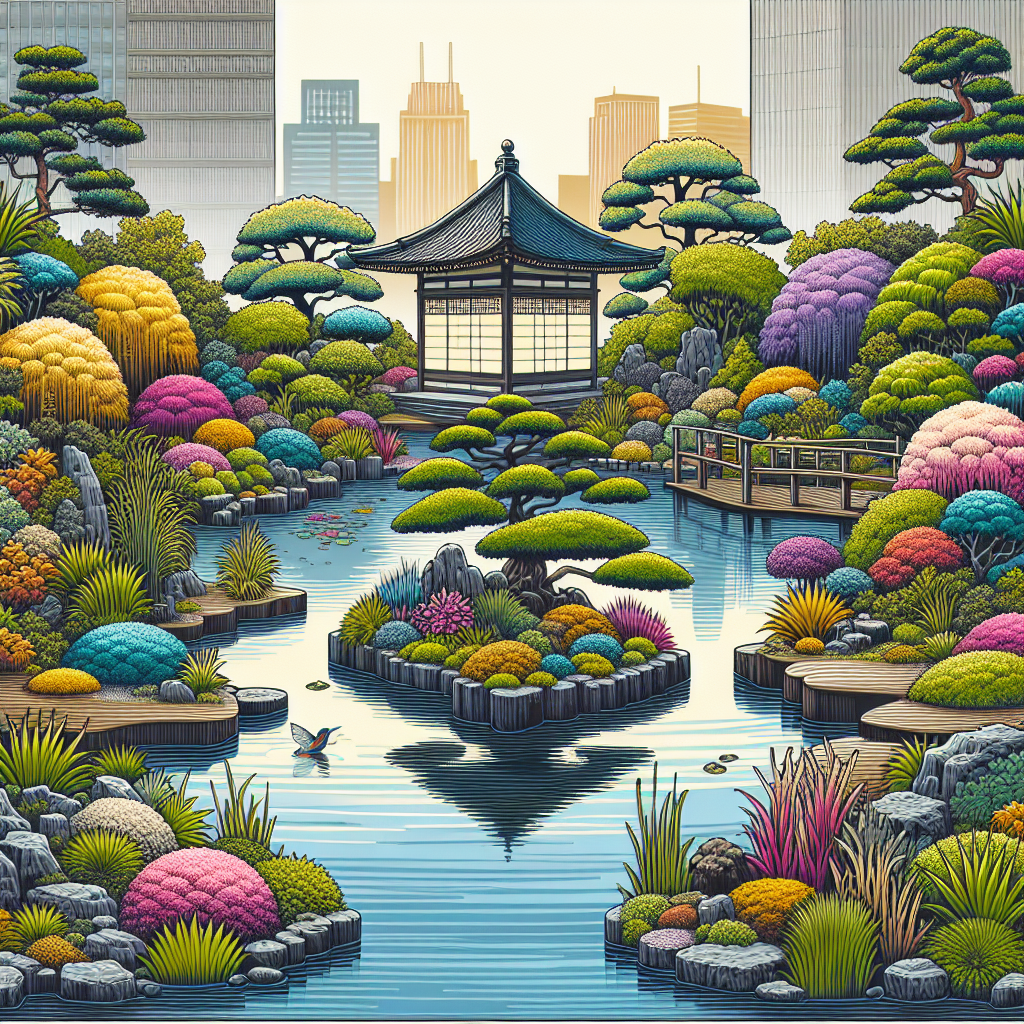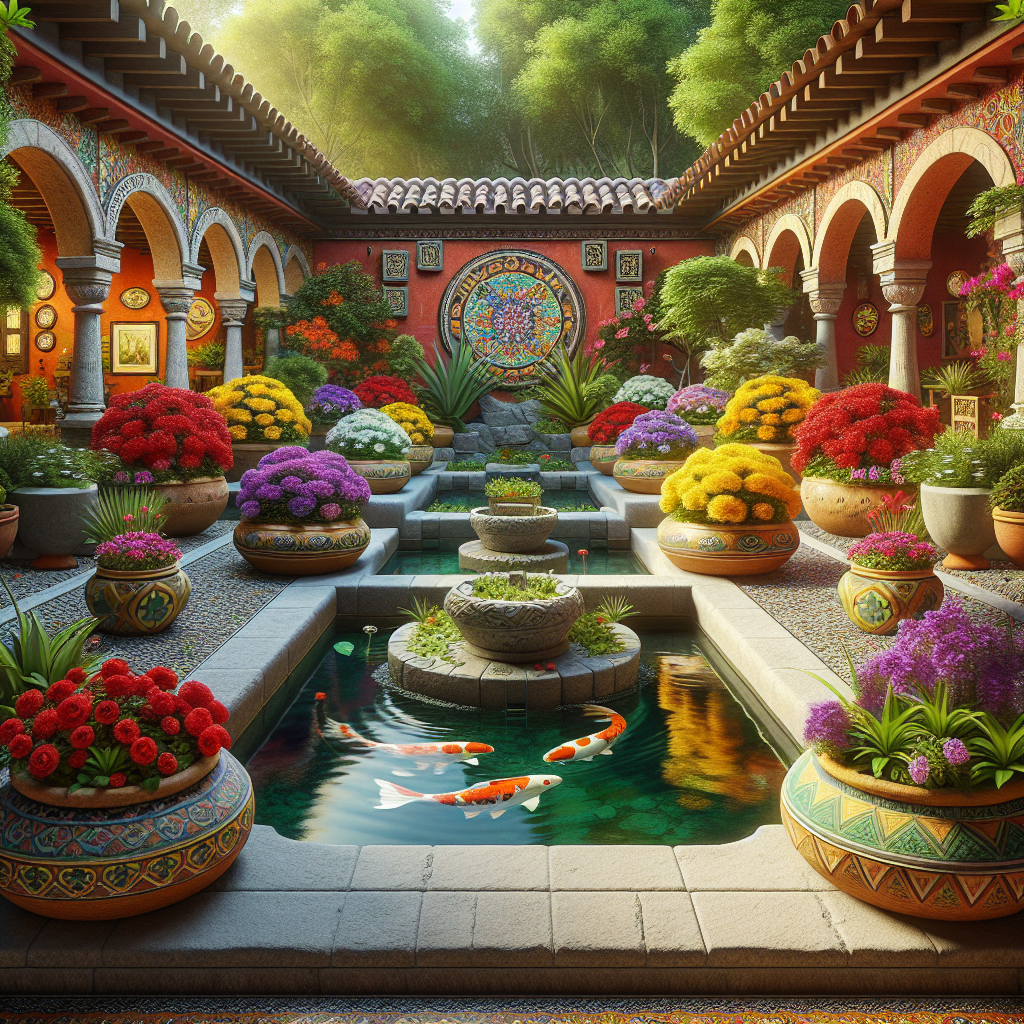Imagine stepping into a world of tranquility and pure bliss, where time seems to stand still and your soul feels at peace. This is what Mexico’s Zen Gardens offer – a serene haven where you can escape the hustle and bustle of everyday life and reconnect with your inner self. From the lush landscapes of Chapultepec Park in Mexico City to the ancient grounds of Monte Alban in Oaxaca, these sacred spaces invite you to embark on a spiritual journey like no other, immersing yourself in the beauty of nature and finding solace in the art of meditation. Whether you are a seasoned practitioner or a curious novice, Mexico’s Zen Gardens promise to awaken your senses and rejuvenate your spirit.
History of Zen Gardens in Mexico
Origin of Zen Gardens in Mexico
The history of Zen gardens in Mexico dates back to the 20th century when Japanese immigrants first introduced these tranquil spaces to the country. As part of their cultural heritage, these immigrants brought with them the practice of Zen Buddhism, which emphasized meditation and mindfulness. With the establishment of Zen Buddhist communities in Mexico, the traditional Japanese art of creating Zen gardens began to take root.
Influence of Japanese Zen Gardens in Mexico
The influence of Japanese Zen gardens in Mexico cannot be overstated. The meticulous design principles and philosophies behind these gardens resonated with the Mexican people, who embraced the tranquility and harmonious balance they offered. Japanese expansionary efforts in Mexico during the 1950s also played a significant role in bringing Zen gardens to the forefront of Mexican culture. As a result, the aesthetics and principles of Japanese Zen gardens began to merge with indigenous Mexican sensibilities, giving rise to a unique style of Zen gardens that could be found nowhere else in the world.
Evolution and Development of Zen Gardens in Mexico
Over the years, Mexican Zen gardens have continued to evolve and develop, incorporating local elements and cultural influences. As Mexican gardeners and landscape designers became more familiar with the principles of Zen and its connection to nature, they began to infuse their own artistic expression into the design of these serene spaces. This evolution has led to the creation of Mexican Zen gardens that honor both their Japanese origins and the vibrant spirit of Mexican traditions.
Characteristics of Mexican Zen Gardens
Minimalistic Design
One of the defining characteristics of Mexican Zen gardens is their minimalistic design. Inspired by Japanese aesthetics, these gardens follow the principle of “less is more.” They feature clean lines, open spaces, and a deliberate simplicity. The absence of excessive ornamentation allows visitors to focus on the essential elements of the garden, fostering a sense of peace and tranquility.
Integration of Native Mexican Elements
Mexican Zen gardens celebrate the rich diversity of Mexico’s natural landscape by integrating native Mexican elements. Whether through the use of local flora, traditional architectural structures, or cultural symbols, these gardens pay homage to the country’s indigenous heritage. By blending traditional Japanese design principles with Mexican cultural elements, Mexican Zen gardens create a truly unique and harmonious space.
Emphasis on Natural Beauty
In Mexican Zen gardens, there is a strong emphasis on the appreciation of natural beauty. These gardens aim to create a space where visitors can connect with the inherent serenity and tranquility of nature. Through the use of carefully curated plants, rocks, water features, and other natural elements, Mexican Zen gardens seek to evoke a sense of harmony and balance, providing a sanctuary amidst the hustle and bustle of everyday life.

Famous Zen Gardens in Mexico
Garden of Five Senses
Located in Mexico City, the Garden of Five Senses, or Jardin de los Cinco Sentidos, is a renowned Zen garden that captivates visitors with its enchanting design. As the name suggests, this garden engages all five senses, showcasing a carefully curated selection of plants, fragrances, textures, and sounds. The garden’s meandering paths lead visitors on a journey of mindfulness and self-reflection, immersing them in a sensory experience that brings a sense of inner peace.
Xochimilco’s Floating Gardens
Xochimilco, a UNESCO World Heritage site in Mexico City, is famous for its stunning chinampas, or floating gardens, which have a deep spiritual significance in Mexican culture. These floating gardens, reminiscent of Japanese water gardens, offer a unique blend of natural beauty and cultural heritage. Visitors to Xochimilco can explore the canals on colorful trajineras, traditional boats adorned with flowers, and lush vegetation, creating a Zen-like atmosphere amidst the bustling city.
Jardin del Encanto
Nestled in the heart of San Miguel de Allende, the Jardin del Encanto is a picturesque Zen garden known for its meticulously pruned plants, tranquil water features, and peaceful ambience. The garden’s harmonic composition and symmetrical design create a space of serenity and contemplation. Locals and tourists alike flock to Jardin del Encanto to seek tranquility and enjoy moments of reflection in this enchanting oasis.
The Role of Zen Gardens in Mexican Culture
Zen Gardens as a Place of Reflection and Meditation
Zen gardens in Mexico serve as sacred spaces for reflection and meditation. These gardens provide an escape from the chaos of daily life, offering individuals a peaceful sanctuary to slow down, reconnect with themselves, and practice mindfulness. As Zen Buddhism teaches, the act of contemplating the simple beauty of a Zen garden can lead to profound insights and spiritual growth.
Connection to Indigenous Mexican Practices
Mexican Zen gardens also maintain a strong connection to indigenous Mexican practices. Through the integration of local plants, cultural symbols, and architectural elements, these gardens honor the country’s rich heritage. By blending Japanese Zen principles with indigenous Mexican philosophies, Mexican Zen gardens create a bridge between different cultures, fostering a sense of unity and shared experiences.
Influence on Mexican Art and Architecture
The influence of Zen gardens can be seen not only in the natural world but also in Mexican art and architecture. The harmonious design principles, minimalist aesthetics, and emphasis on natural beauty have permeated various art forms and architectural styles throughout the country. From the sleek lines of contemporary Mexican architecture to the traditional craftsmanship in Mexican art, Zen gardens have left an indelible mark on Mexican culture and design.

Benefits of Zen Gardens
Stress Reduction and Relaxation
Spending time in a Zen garden can have a profound impact on reducing stress and inducing relaxation. The peaceful ambiance, combined with the carefully crafted natural elements, allows visitors to let go of tension and experience a sense of calm. The act of immersing oneself in the simple beauty of a Zen garden helps to recharge and rejuvenate both the mind and body.
Enhancement of Mental Clarity and Focus
Zen gardens are known to enhance mental clarity and focus. As visitors engage with the minimalist design and carefully arranged elements, they are encouraged to let go of distractions and cultivate a state of mindfulness. The serene environment of a Zen garden supports mental concentration, allowing individuals to gain clarity and find balance in their thoughts.
Promotion of Mindfulness and Well-being
Mindfulness is a key aspect of Zen gardens. By creating a space free from external stimuli, these gardens encourage individuals to be fully present and engage with their surroundings. This practice of mindfulness promotes a sense of well-being, as it allows individuals to find solace amidst the chaos of daily life and reconnect with their inner selves.
Design Elements of Mexican Zen Gardens
Raked Gravel and Sand Patterns
A striking feature of Mexican Zen gardens is the use of raked gravel and sand patterns. These intricate designs, often referred to as karesansui, serve both a practical and aesthetic purpose. The raked patterns represent the ebbs and flows of water or waves, while also providing a visually pleasing element that adds depth and texture to the garden.
Bonsai Trees and Pruned Shrubs
Bonsai trees and pruned shrubs are common design elements found in Mexican Zen gardens. These miniature trees and artistic pruning techniques offer a sense of harmony and balance, reflecting the meticulous attention to detail that characterizes Zen gardens. The careful cultivation and shaping of these plants contribute to the overall aesthetic and create a serene atmosphere.
Water Features and Symbolism
Water features play an essential role in Mexican Zen gardens, symbolizing the flow of life and the changing seasons. Ponds, streams, and waterfalls are carefully designed to mimic the natural beauty of flowing water, creating a sense of tranquility and renewal. These water features also provide a visual focal point, allowing visitors to meditate and reflect upon the fluidity of existence.

Zen Garden Meditation Retreats in Mexico
Overview of Meditation Retreats in Mexico
Mexico is home to numerous Zen garden meditation retreats, offering individuals the opportunity to immerse themselves in a serene and contemplative environment. These retreats provide a range of programs and activities, including guided meditation sessions, yoga classes, and workshops on Zen philosophy. With their tranquil surroundings and knowledgeable instructors, these retreats serve as a refuge for those seeking personal growth and spiritual development.
Benefits of Zen Garden Meditation
Zen garden meditation offers a multitude of benefits for both the mind and body. Regular meditation practice in a Zen garden can help reduce stress, improve focus and concentration, increase self-awareness, and promote emotional well-being. It provides a space for individuals to disconnect from the outside world, reconnect with their inner selves, and find a sense of calm amidst the chaos of daily life.
Popular Zen Garden Retreat Centers in Mexico
Some of the popular Zen garden retreat centers in Mexico include Hacienda del Aqua in San Miguel de Allende, Xinalani Retreat in Puerto Vallarta, and Casa Om in Playa del Carmen. These centers offer a range of accommodations, from rustic cabins to luxurious villas, and provide various meditation and yoga programs. With their idyllic locations and serene atmospheres, these retreat centers offer individuals a chance to experience the transformative power of Zen gardens firsthand.
Zen Garden Maintenance and Care
Pruning and Trimming Techniques
Maintaining the pristine beauty of a Zen garden requires specific pruning and trimming techniques. Gardeners utilize traditional Japanese pruning methods to shape and maintain the bonsai trees and shrubs. These techniques include careful observation, precise cuts, and regular maintenance to ensure the plants remain in harmony with the overall design of the garden.
Seasonal Changes and Adaptation
Zen gardens in Mexico, like any other garden, undergo seasonal changes that require adaptive maintenance. During colder months, gardeners may need to protect certain plants and make adjustments to the arrangement of rocks and other elements to maintain visual balance. The ability to adapt to seasonal changes ensures that the Zen garden remains a serene and inviting place year-round.
Use of Traditional Japanese Garden Tools
Maintaining a Mexican Zen garden often involves using traditional Japanese garden tools. Pruning shears, bamboo rakes, and other specialized implements are used to tend to the plants, rake the gravel, and maintain the overall appearance of the garden. These tools are designed to be both functional and aesthetically pleasing, embodying the harmonious balance that characterizes Zen gardens.

Mexican Zen Gardens and Sustainable Design
Use of Native Plants and Drought-Tolerant Species
Mexican Zen gardens prioritize sustainability by utilizing native plants and drought-tolerant species. By selecting plants that are well-suited to the local climate and require minimal water, these gardens minimize their impact on the environment. The use of drought-tolerant plants also helps conserve water resources, making Mexican Zen gardens an environmentally conscious choice.
Rainwater Harvesting and Conservation
To further enhance their sustainability, Mexican Zen gardens often incorporate rainwater harvesting and conservation practices. These gardens incorporate rain barrels, swales, and other water collection systems to capture and store rainwater for later use. By reducing dependency on municipal water sources, Mexican Zen gardens demonstrate a commitment to conservation and self-sufficiency.
Eco-friendly Practices in Zen Garden Construction
The construction of Mexican Zen gardens also emphasizes eco-friendly practices. Gardens are designed with permeable materials to reduce runoff and allow for groundwater infiltration. Recycled and locally sourced materials are often used in hardscape construction to minimize environmental impact. Additionally, the gardens are designed to work in harmony with their surroundings, blending seamlessly into the natural landscape and minimizing disruption to the ecosystem.
The Future of Zen Gardens in Mexico
Growing Popularity and Interest
As more people embrace the benefits and tranquility offered by Zen gardens, their popularity continues to grow in Mexico. The allure of these serene spaces attracts individuals seeking respite from the stresses of modern life, as well as those interested in exploring the intersection of Mexican and Japanese cultures. The future looks promising for Zen gardens in Mexico, as they offer a sanctuary for self-reflection, relaxation, and spiritual growth.
Influence on Contemporary Garden Design
The influence of Zen gardens can be seen in contemporary garden design throughout Mexico. As gardeners and landscape designers incorporate the principles of Zen into their work, they create harmonious and peaceful spaces that connect people with nature. This merging of Zen aesthetics with modern design sensibilities has resulted in innovative and captivating garden landscapes that continue to inspire and captivate visitors.
Preservation and Conservation Efforts
Efforts are being made to preserve and conserve the rich heritage of Mexican Zen gardens. Organizations and individuals are working together to protect and document these gardens, ensuring that future generations can appreciate and learn from their beauty and significance. By recognizing the cultural and environmental importance of Mexican Zen gardens, preservation and conservation efforts aim to safeguard these serene spaces for years to come.

